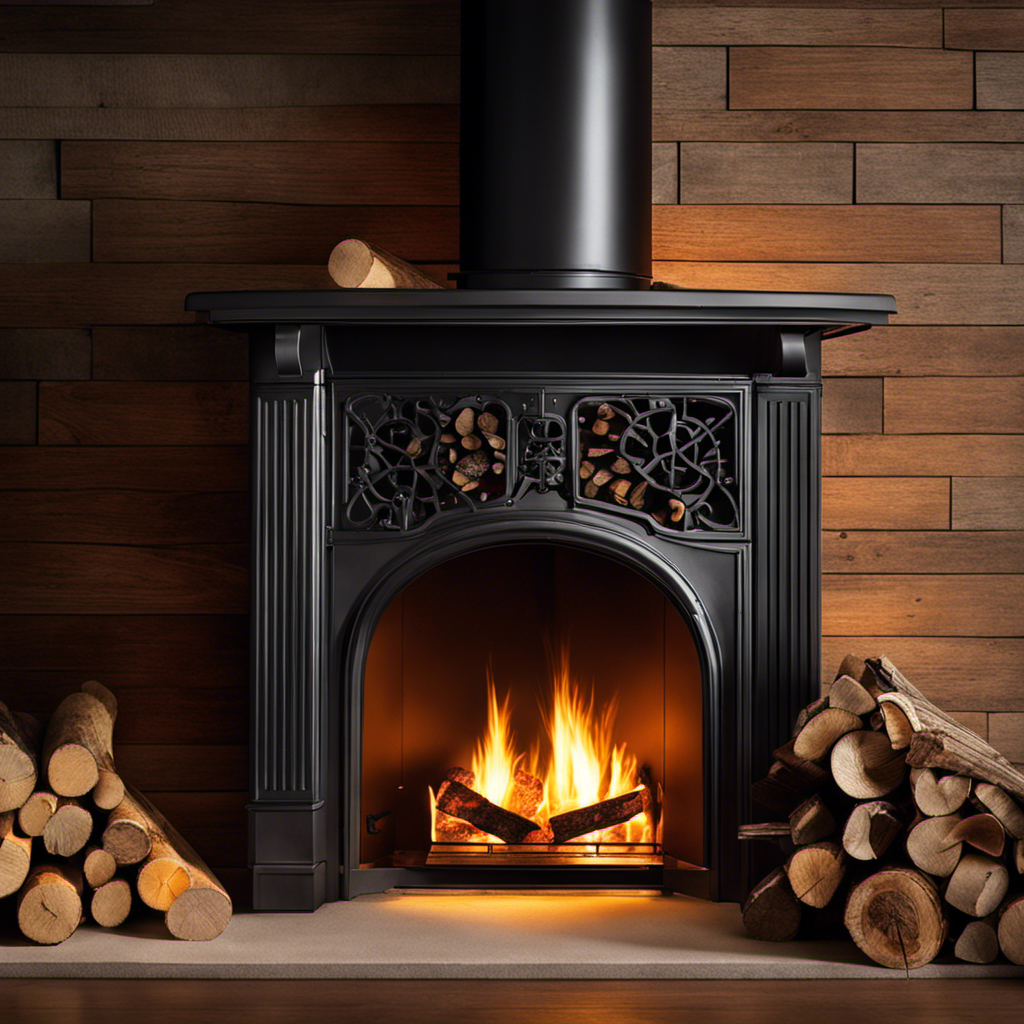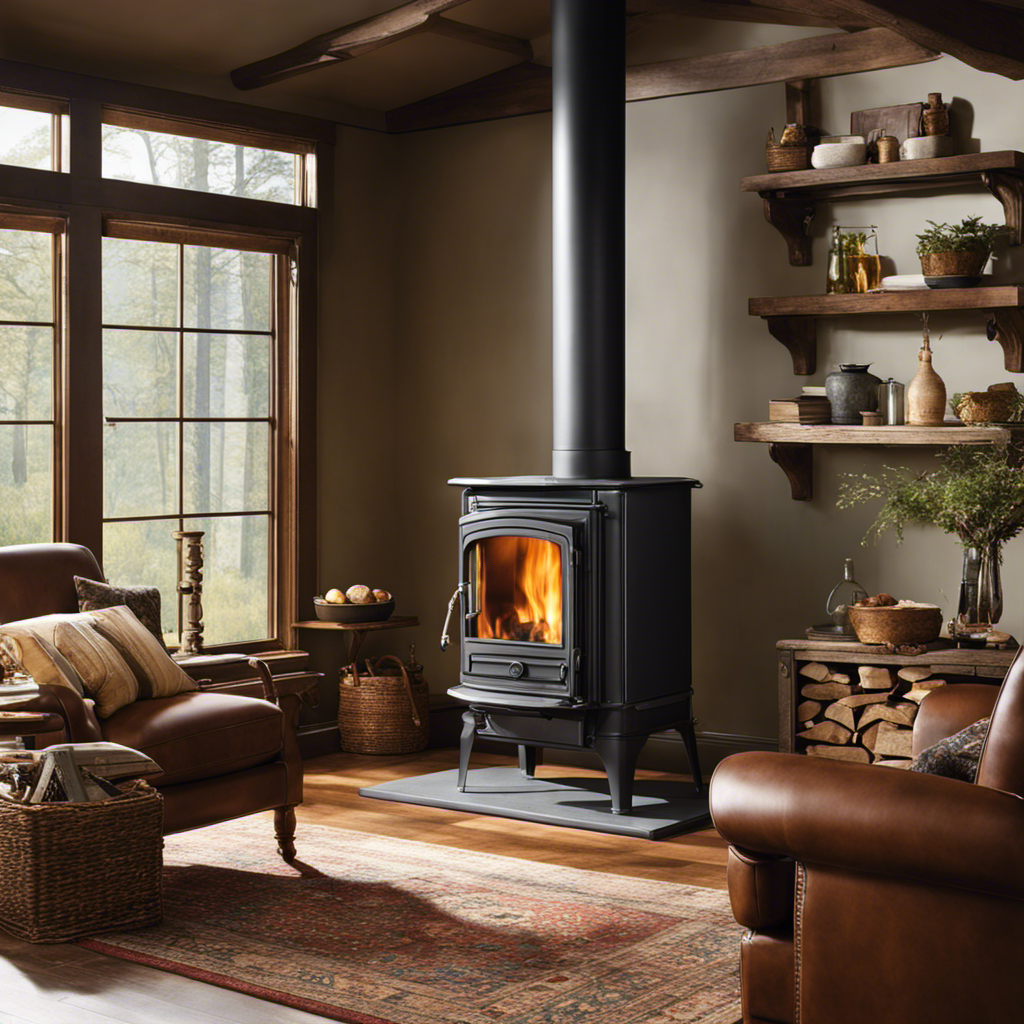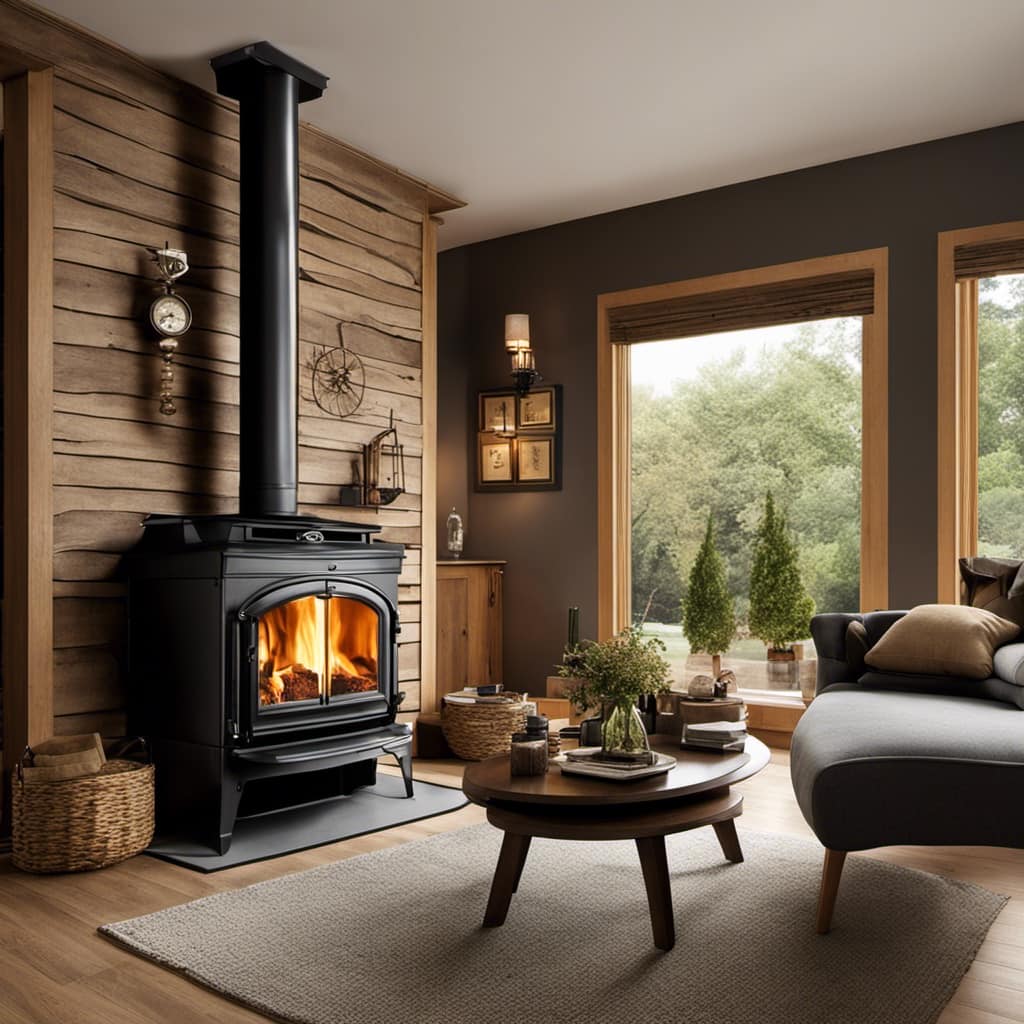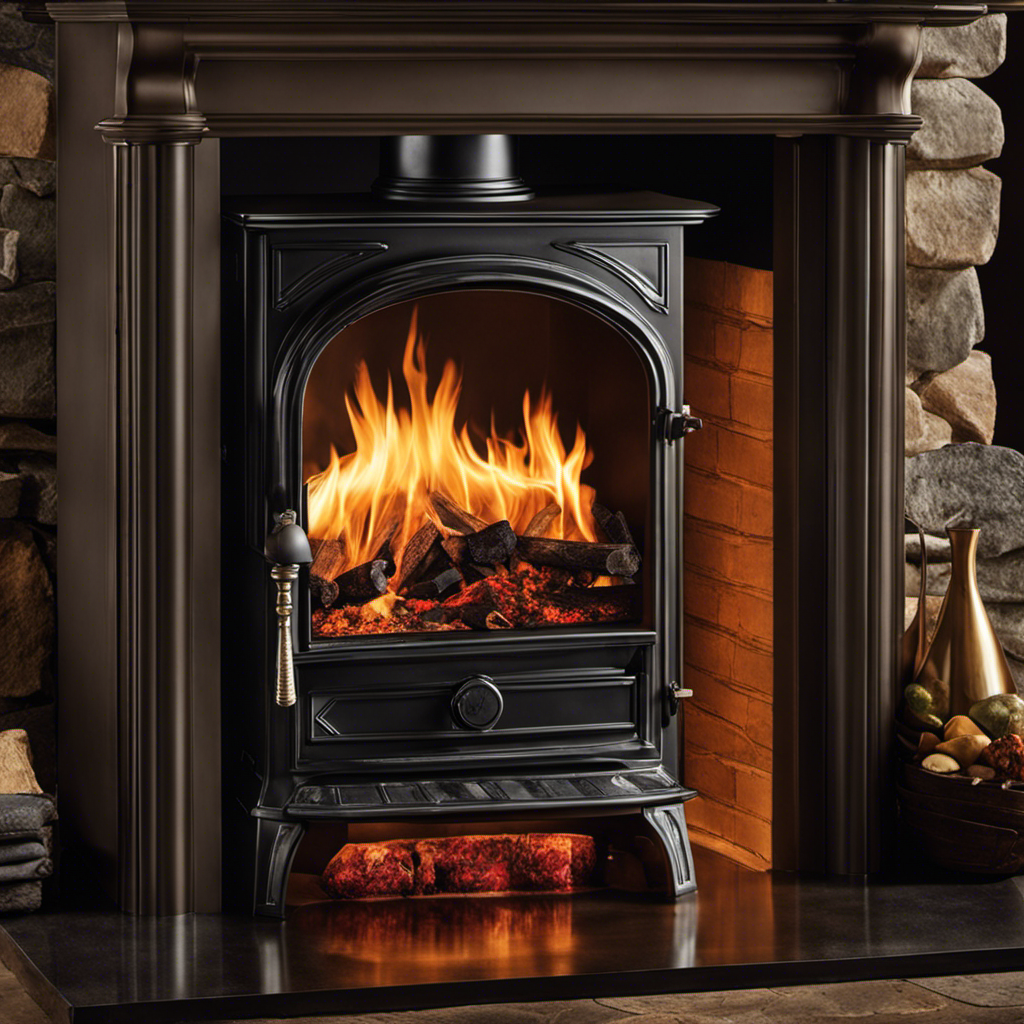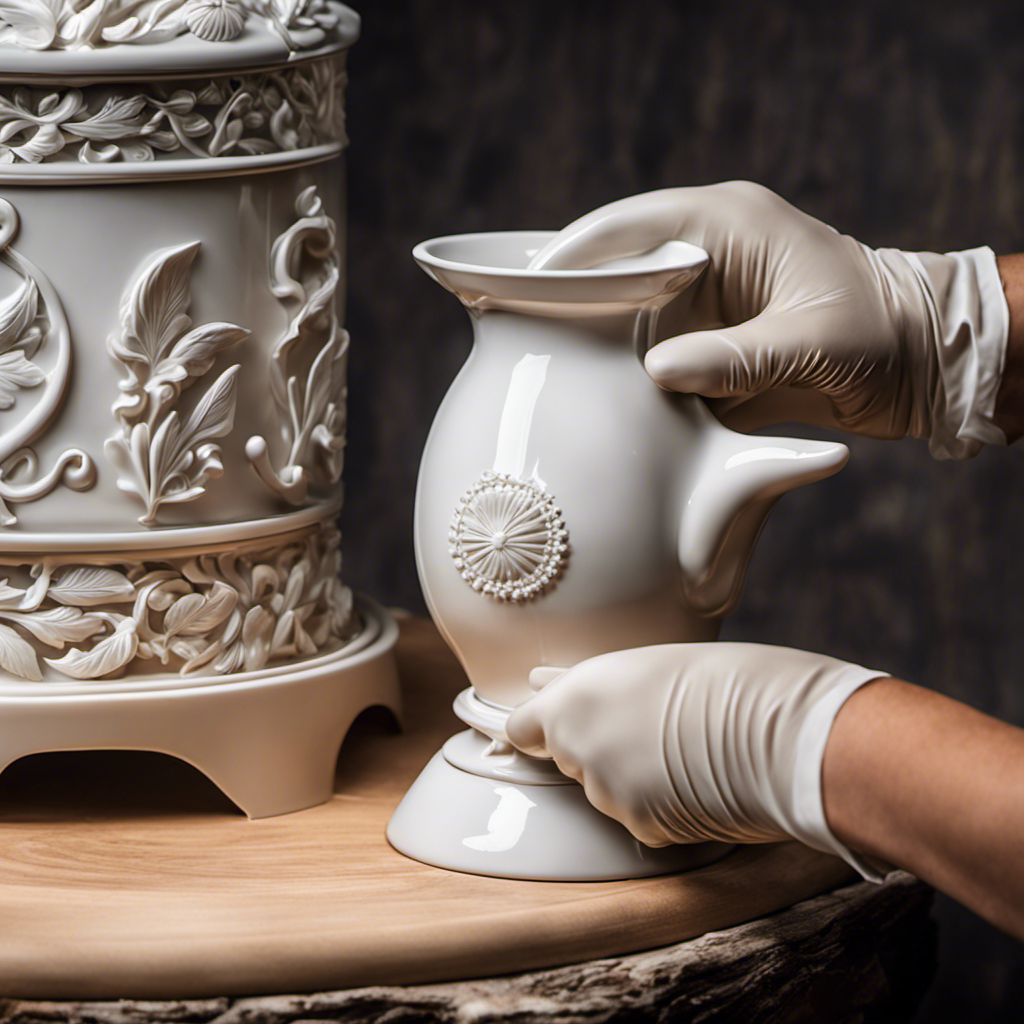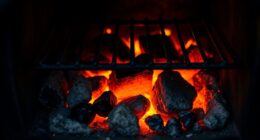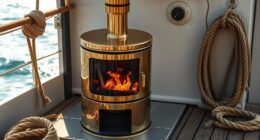I have always viewed the process of starting a fire in a wood stove insert as akin to igniting a small, controlled wildfire right in my own living room. It involves carefully gathering the necessary components, preparing the stove, and strategically positioning the logs.
But once you master the art, the warmth and ambiance it brings is worth the effort. In this guide, I’ll walk you through the steps, sharing my knowledge and tips for building a perfect fire in your wood stove insert.
Key Takeaways
- Choose hardwoods like oak, maple, or birch for longer burn time and more heat.
- Use softwoods like pine or spruce as kindling for quick fire starting.
- Regularly clean the stovepipe and chimney to prevent creosote buildup.
- Inspect the chimney and flue for blockage or damage.
Gathering the Necessary Materials
I’ll start by grabbing the firewood and kindling for gathering the necessary materials. Choosing the right firewood is crucial for a successful wood stove fire. Hardwoods like oak, maple, or birch are ideal as they burn longer and produce more heat. Softwoods like pine or spruce can be used as kindling to start the fire quickly. It’s important to avoid using wet or green wood as it can create excess smoke and increase the risk of chimney fires.
Safety precautions during wood stove fires are essential to prevent accidents. Always keep a fire extinguisher nearby and make sure the stove is clear of any flammable materials. Regularly clean the stovepipe and chimney to prevent creosote buildup. Additionally, never leave the fire unattended and always use a fireplace screen to prevent sparks from escaping.
Preparing the Wood Stove Insert
Carefully cleaning the ash and debris from the wood stove insert ensures proper airflow and efficient burning. Before starting a fire, it’s crucial to clean the stove insert thoroughly. Begin by removing any leftover ashes using a fireplace shovel and ash bucket. Then, use a stiff brush to scrub the interior, removing any soot or creosote buildup. Be sure to clean the glass window as well, using a non-abrasive cleaner. Once the stove insert is clean, it’s essential to inspect the chimney and flue. Look for any signs of blockage or damage, such as debris or cracks. Clear any obstructions and repair any issues before proceeding.
With the wood stove insert clean and the chimney inspected, it’s now time to arrange the firewood properly…
By arranging the firewood properly, you ensure efficient burning and a long-lasting fire. Start by selecting seasoned hardwood, such as oak or maple, as it burns hotter and produces less smoke. Place the larger logs at the bottom of the stove, forming a sturdy base. Then, stack smaller logs and kindling on top, leaving enough space for airflow. Remember to leave gaps between the logs to allow oxygen to reach the fire. Additionally, avoid overcrowding the stove insert, as this can restrict airflow and lead to poor combustion.
Arranging the Firewood Properly
I’ve carefully stacked a few large logs and several smaller ones in the wood stove insert to ensure proper airflow and efficient burning. When arranging firewood, it’s important to consider firewood storage and firewood moisture to achieve optimal results.
Firewood Storage:
- Store firewood in a dry, well-ventilated area to prevent moisture absorption.
- Keep firewood off the ground by using a rack or pallet to avoid moisture seepage from the soil.
Firewood Moisture:
- Season firewood properly to reduce moisture content for efficient burning.
- Aim for a moisture content of around 20% or less for optimal heat output and minimal smoke production.
Igniting the Fire in the Wood Stove Insert
To ensure a successful fire in the wood stove insert, I need to focus on the ignition process and create a strong flame. There are different types of fire starters that can be used to ignite a fire in a wood stove insert. Some popular options include newspaper, firelighters, and kindling.
Newspaper can be crumpled up and placed at the bottom of the stove, while firelighters are small, compressed blocks that can be lit with a match and placed on top of the newspaper. Kindling, which consists of small, dry sticks, can be arranged on top of the firelighters to help the fire catch.
It’s important to avoid common mistakes when igniting a fire in a wood stove insert, such as using damp or green wood, overcrowding the stove with too much wood, or not giving the fire enough oxygen to burn properly.
Maintaining and Controlling the Fire for Optimal Heat
The key to maintaining and controlling the fire for optimal heat is to regularly add small amounts of seasoned wood and adjust the damper to control the airflow. By doing so, you can ensure that your wood stove insert operates efficiently and provides the desired level of warmth.
Controlling Airflow:
- Adjust the damper settings to regulate the amount of air entering the firebox.
- Increase the airflow for a more vigorous fire or decrease it for a slower burn.
Adjusting Damper Settings:
- Open the damper fully when starting a fire to promote sufficient oxygen flow.
- Close the damper partially once the fire is established to maintain a steady burn.
Frequently Asked Questions
How Long Does It Take for a Wood Stove Insert to Heat up a Room?
It usually takes around 30 minutes for a wood stove insert to heat up a room. However, to maximize heat efficiency, proper maintenance is crucial. Here are some tips for maintaining and maximizing heat output in a wood stove insert.
Can I Use Softwood Instead of Hardwood in a Wood Stove Insert?
Can softwood be used instead of hardwood in a wood stove insert? While hardwood is preferred due to its longer burn time and higher heat output, softwood can be used if properly seasoned and in smaller quantities.
What Is the Best Way to Clean the Glass Door of a Wood Stove Insert?
To clean the glass door of a wood stove insert, there are various DIY methods and cleaning products available. It is important to follow proper safety precautions and choose a method that is suitable for your specific stove.
Is It Safe to Leave a Fire Burning in a Wood Stove Insert Overnight?
Leaving a fire burning in a wood stove insert overnight can be risky. Fire safety precautions are vital to prevent accidents. Maintaining a consistent temperature requires proper airflow control, using seasoned wood, and regularly cleaning the stove.
How Often Should I Have My Wood Stove Insert Professionally Inspected and Cleaned?
I recommend having your wood stove insert professionally inspected and cleaned once a year. The cost for this service can vary depending on your location and the specific company you choose.
Can the same method be used to build a fire in a Wagener Sparky Wood Stove?
Can the same method be used to build a fire in a Wagener Sparky Wood Stove? Yes, the process to build a fire in a Wagener Sparky Wood Stove is similar to other wood-burning stoves. With proper ventilation and using dry, seasoned wood, you can easily build a warm and cozy fire in your Wagener Sparky wood stove. Enjoy efficient and sustainable heating with the build wagener sparky wood stove.
Conclusion
In conclusion, building a fire in a wood stove insert is a straightforward process that can provide optimal heat for your home.
It’s important to gather the necessary materials, prepare the insert, arrange the firewood properly, ignite the fire, and maintain it for optimal heat.
Did you know that wood stove inserts can increase the efficiency of your heating system by up to 80% compared to traditional fireplaces?
This makes them a cost-effective and environmentally friendly choice for heating your home.

